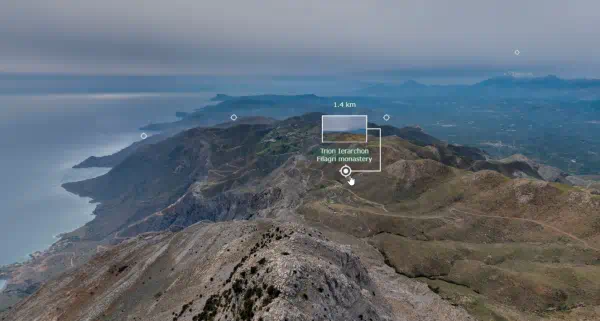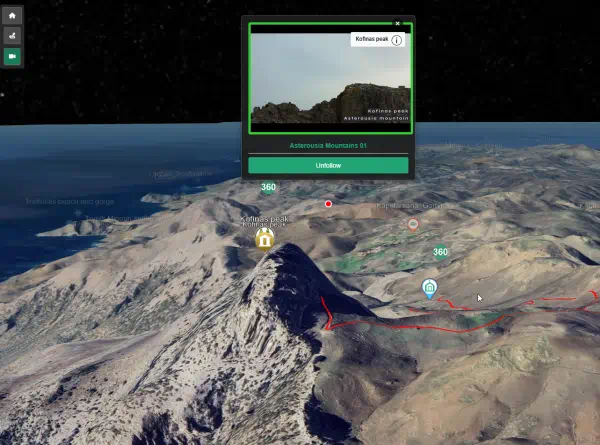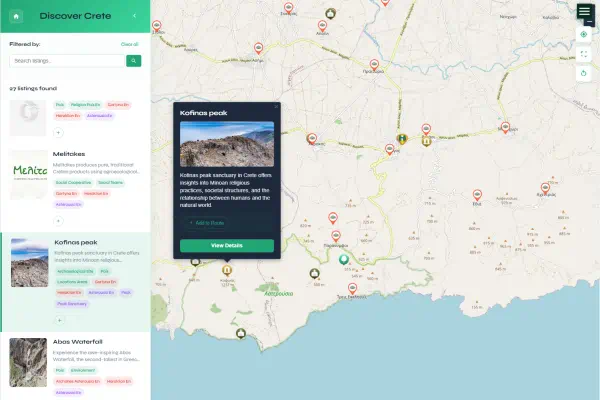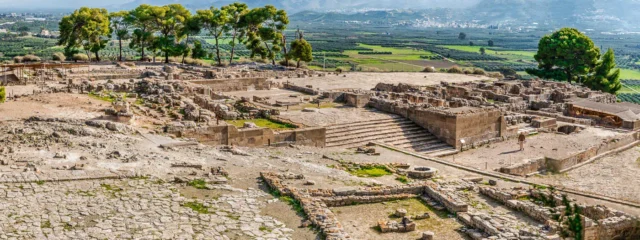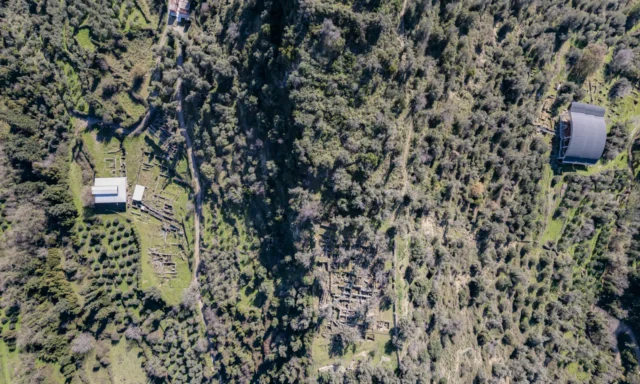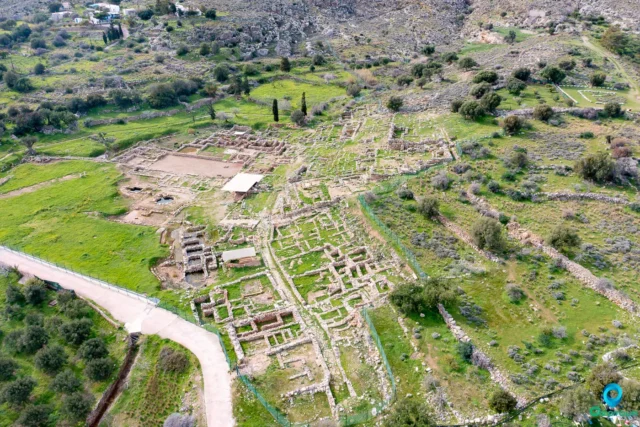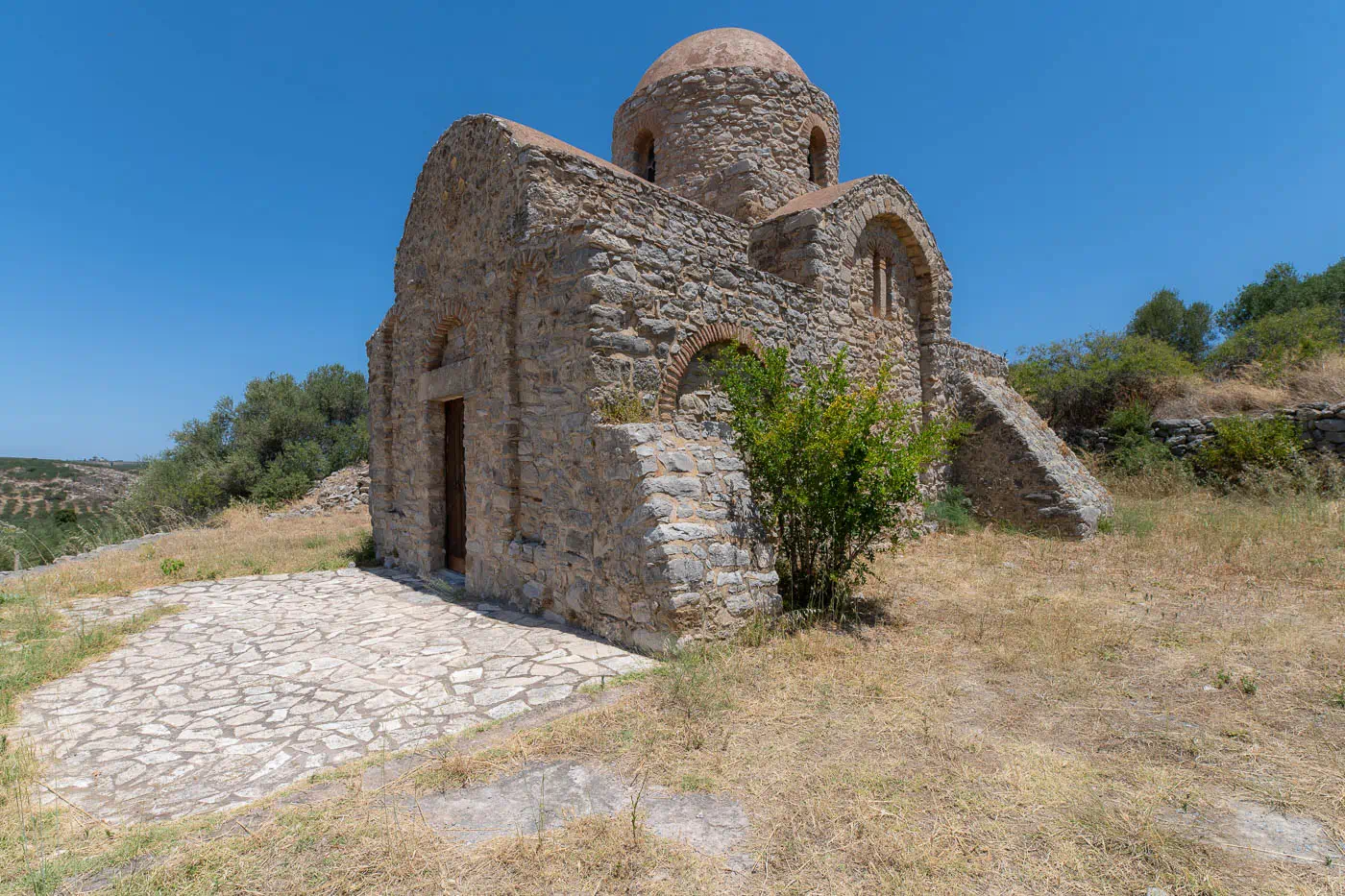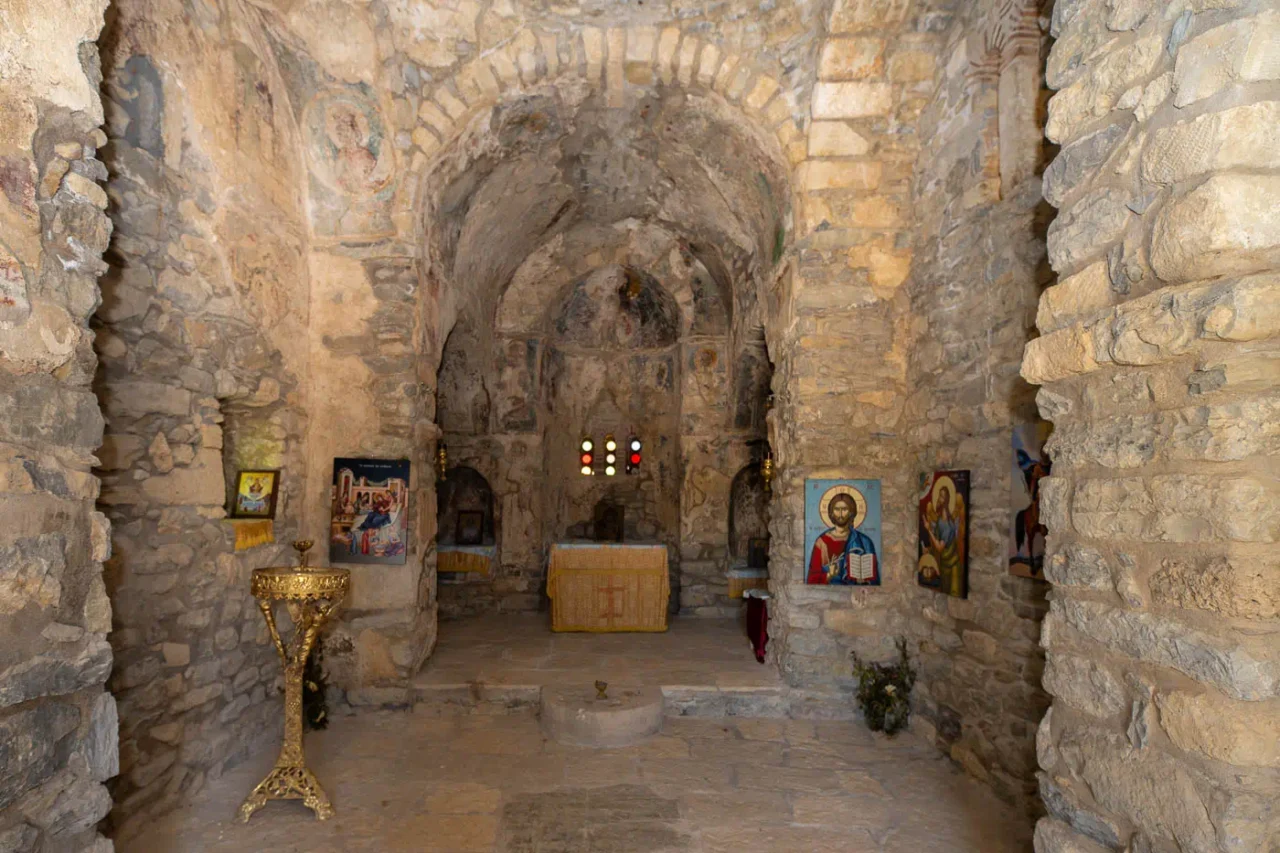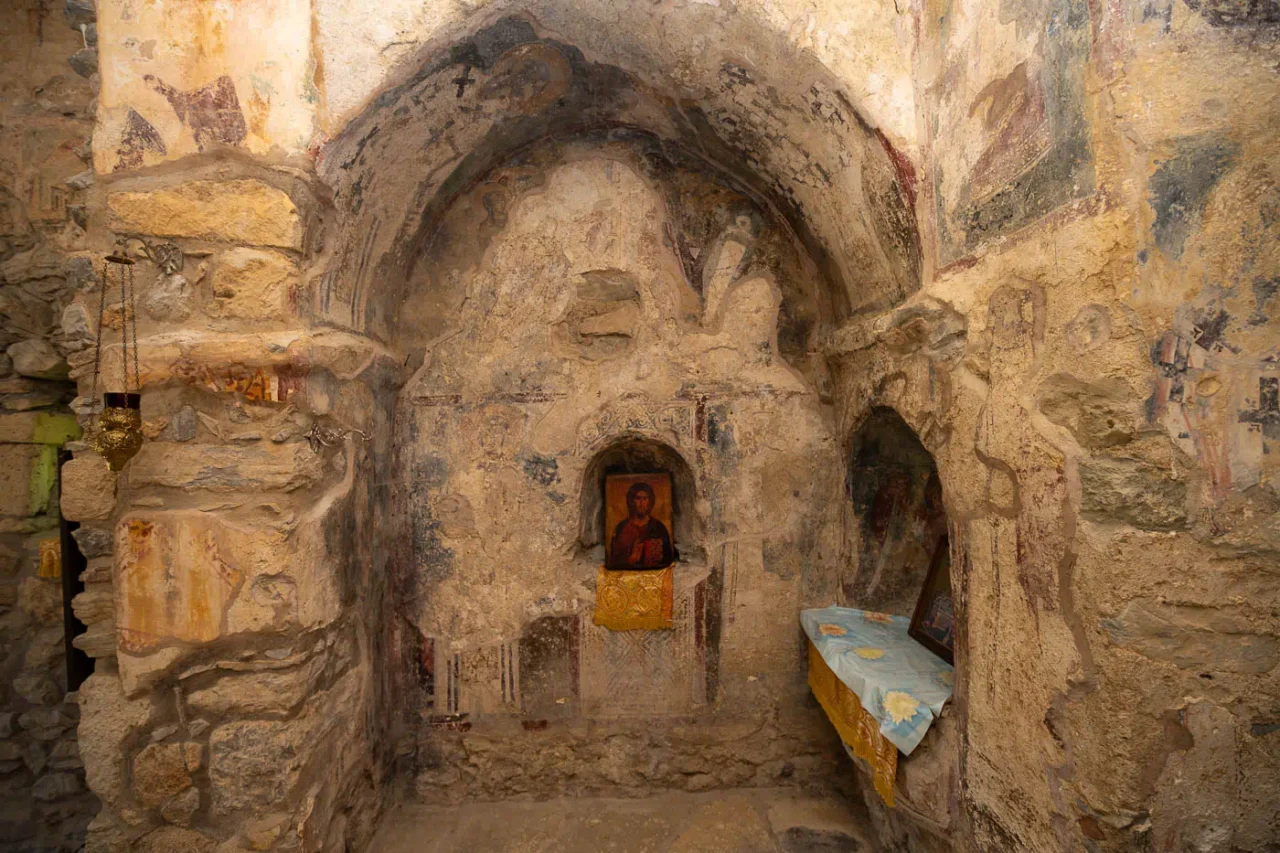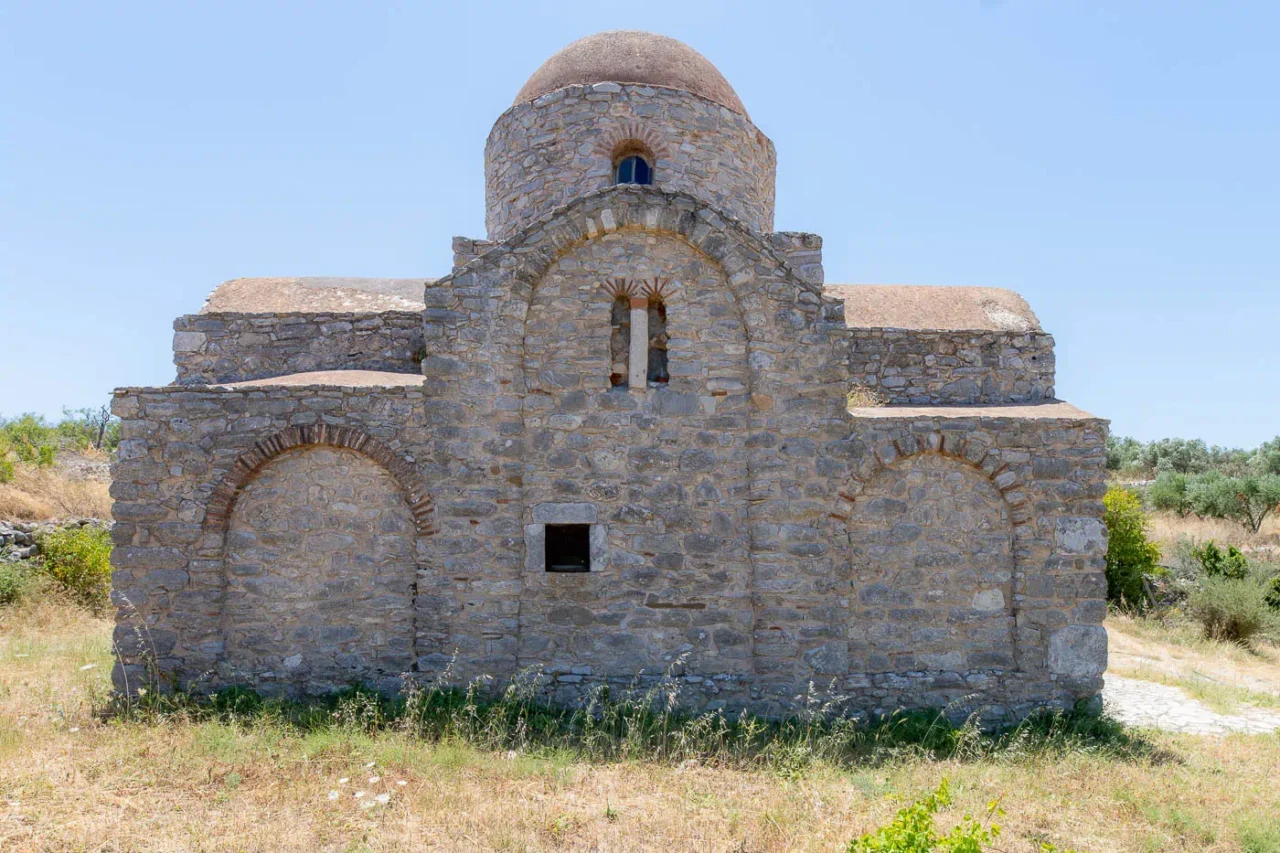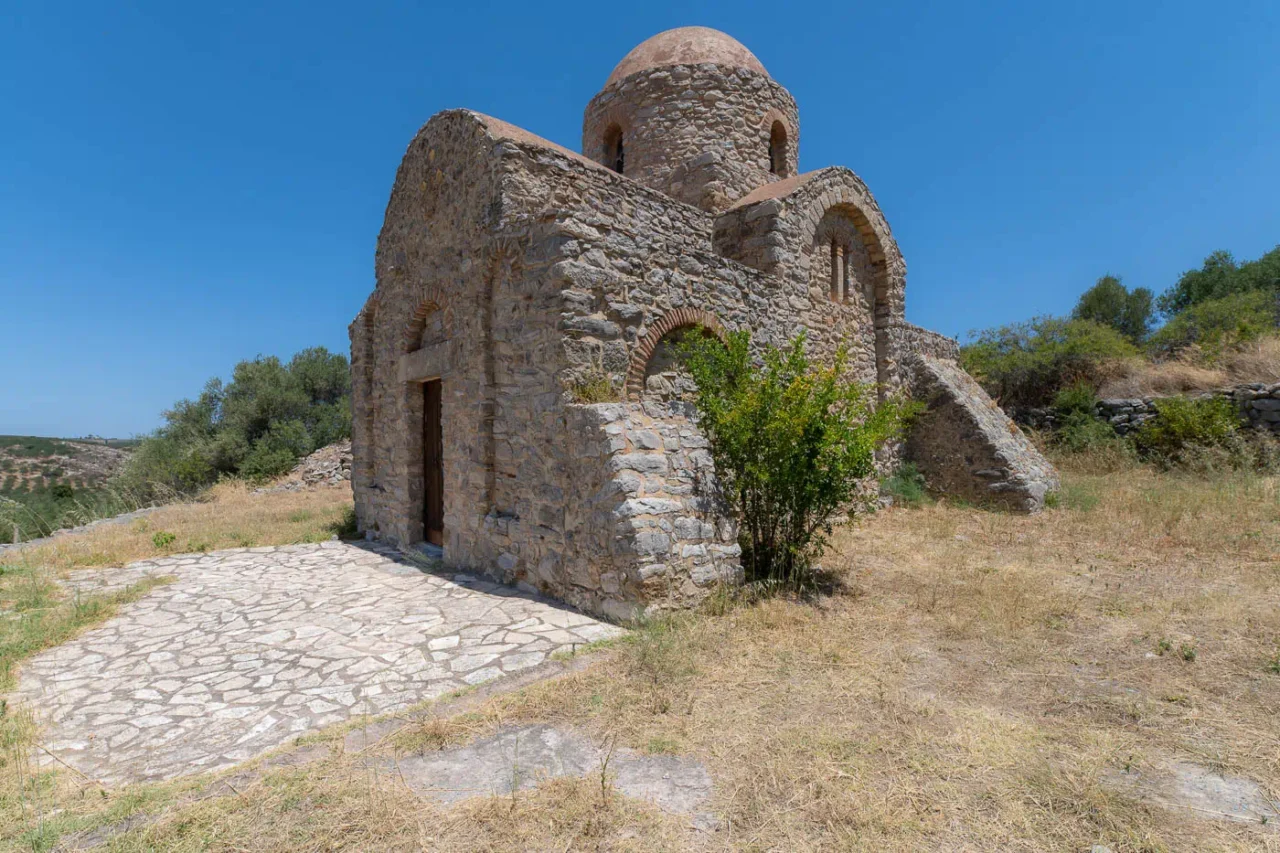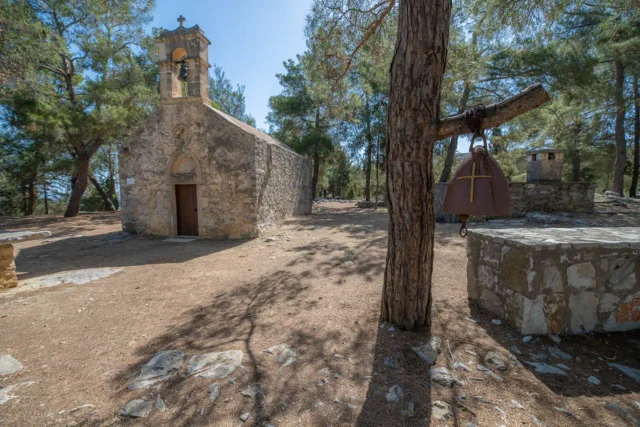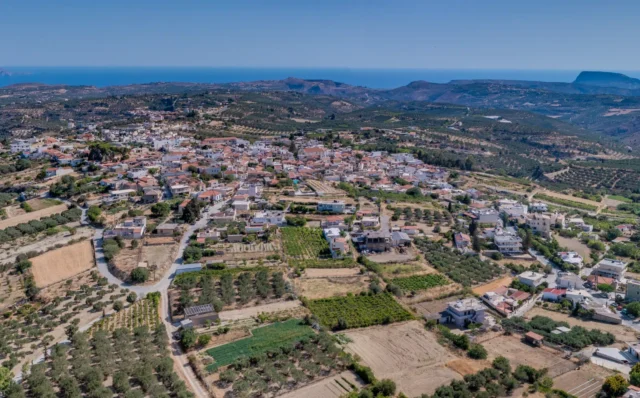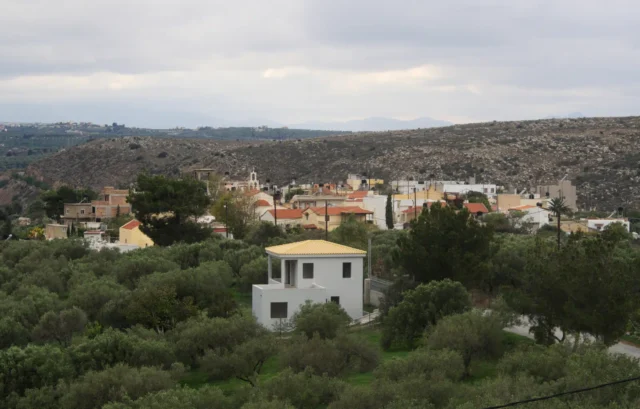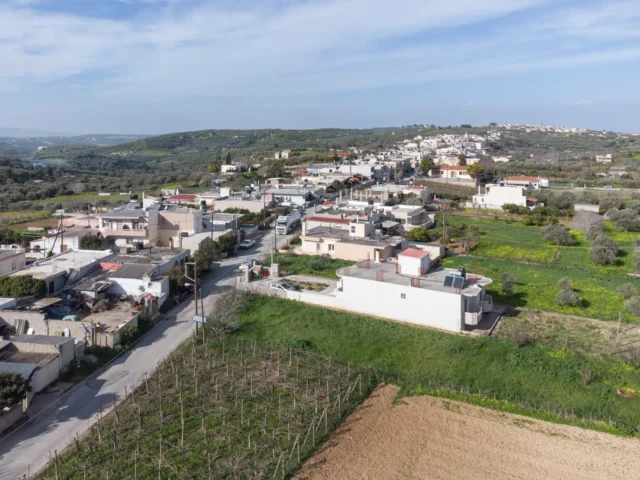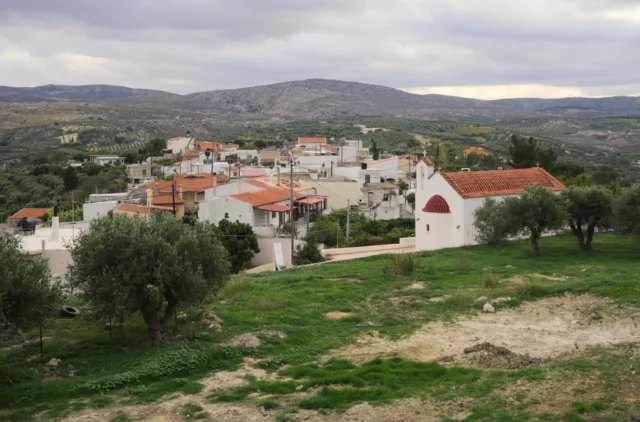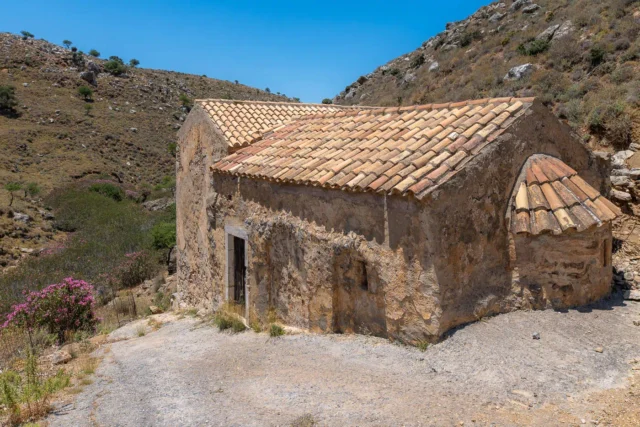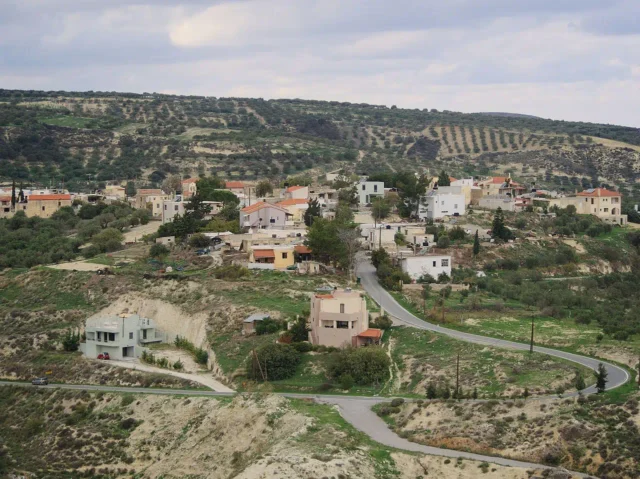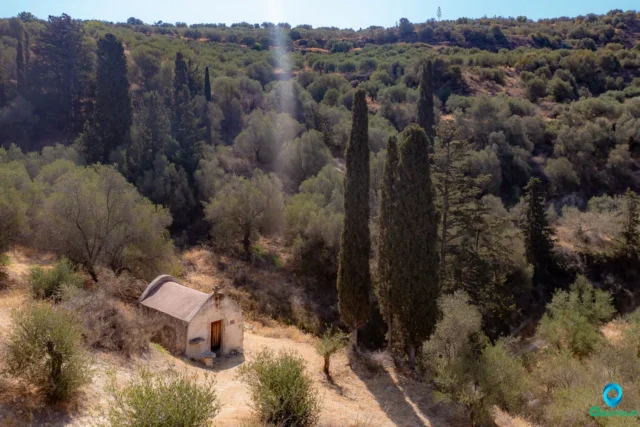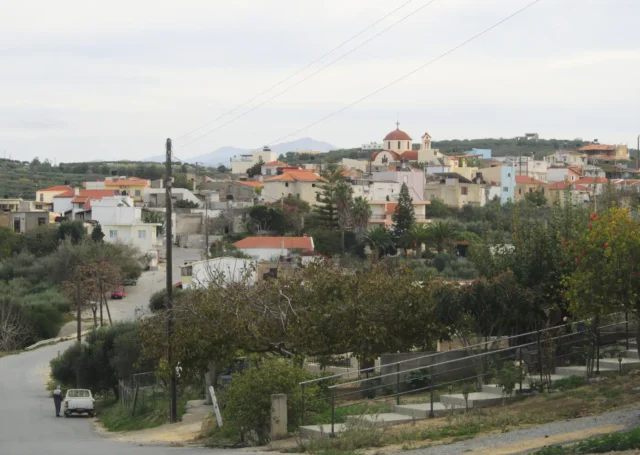The church of Panagia Kera Limniotissa is located east of the Episkopi village in Heraklion, Crete. It is a single-nave, cross-in-square church built in the 11th century. Its historical importance stems from its Byzantine architecture, its multiple layers of frescoes, and its documented history as a convent.
Architecture and Frescoes
The structure follows a Byzantine cross-in-square plan with a central dome. The original dome collapsed and has been rebuilt. The exterior features decorative brickwork.
The interior walls contain three distinct layers of frescoes, which confirms the church was in continuous use for several centuries.
- 11th Century: The first layer dates to the original construction.
- 13th Century: A second layer of frescoes was added.
- 14th Century: The third and final layer was painted.
Notable frescoes include the Virgin Mary Nikopoios (Bringer of Victory) in the apse, Hierarchs in the sanctuary, Christ with the Myrrhbearers on the east wall, and scenes like the Descent into Hell and the Presentation of the Virgin Mary on the north wall.
History as a Convent
During the Venetian period, the church operated as a women’s monastery. Its existence as a convent is confirmed by several historical documents.
- 1524: The earliest known reference is a will in which Nikolos Koupepsas leaves ten hyperpyra (gold coins) to the nuns of Limniotissa.
- 1552 & 1585: Two different abbots from the nearby Agarathos Monastery, Niphon Notaras and Arsenios Evdaimonogiannis, left bequests of 100 hyperpyra each to the convent.
- 1579: A document mentions a nun named Evanthia Tavernopoula.
By the 17th century, the convent’s status changed. A 1609 legal document identifies Panagia Limniotissa as a metochi (a dependency) of the Agarathos Monastery. A 1635 census confirmed this status, listing it as a dependency without income or resident nuns.
Preservation and Access
The church has undergone restoration work to preserve its structure and frescoes. It is accessible via a rural road and is open to visitors.
Site Summary
- Construction Period: 11th century
- Location: Episkopi, Heraklion, Crete
- Architectural Type: Single-nave, cross-in-square church
- Key Features: Preserved fresco layers from the 11th, 13th, and 14th centuries; documented history as a women’s monastery and dependency of Agarathos Monastery.
- Current Status: Restored; open to the public.

